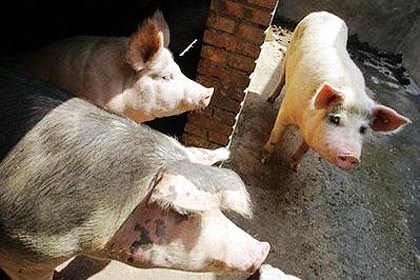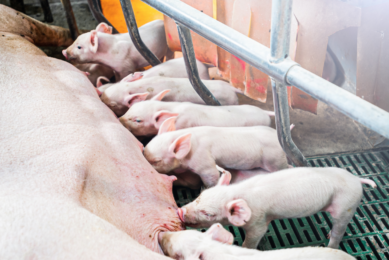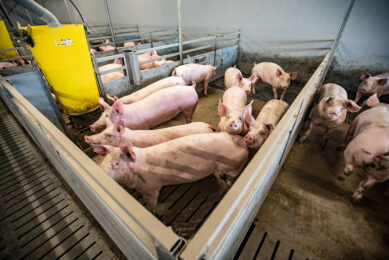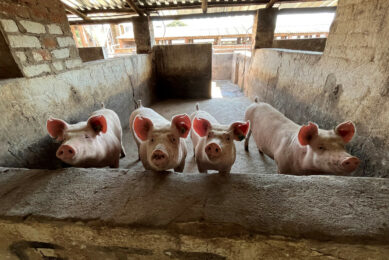Cambodian pig farming changes hands: locals pushed out

Cambodian farmers are feeling the feed squeeze as Thai imports are cheaper and flooding the market. Cambodian pig prices are down by 5% but feed costs are up 25%, all of which are contributing to small farmers leaving pig farming and large corporations and cheaper imports to take over the market.
The average Cambodian consumes 9.3 kg of pork a year and local farmers have long supplemented their incomes by selling an average of two pigs per year.
In 2008, Cambodian farmers sent 2 million pigs to market, accommodating more than 90% of domestic demand. But the small local farmers on the domestic market are being pushed out by large-scale producers and cheaper imports from Thailand.
Live pig prices in Cambodia have fallen 53.5% to about 7,000 riel (€1.34) per kg in one year, pork industry executives say.
Thai imports
Nearly 30% of all subsistence pig farmers have called it quits since last year. Prathna Preap, a swine market expert working for an USAID agency, said that if the government was unable to turn back the tide of cheaper Thai pork imports, then subsistence pig farmers will disappear in five years.
Some farmers are claiming that Thai exporters are using growth hormones to increase the size of their pigs. With a hormone regime, pigs can achieve slaughter weight in half the time (three months) than that achieved through normal feeding. The competitive advantage in hormone supplementation is two-pronged, for not only is the turnover time reduced, feed costs are also less.
In September 2011 Thailand lifted its moratorium on pig exports to Cambodia, with as result that half of Cambodia’s estimated pig consumption (6,000 pigs per day) is accounted for by Thai producers, at reduced production costs.
Corporations take over
With subsistence pig raisers on the way out, corporate processors such as M’s Pig ACMA (Cambodia) Company, 91% owned by the local conglomerate Mong Reththy Group, are taking their place.
According to the Mong Reththy website, the group is planning 16 commercial farms and 15 feed mills and four slaughterhouses able to fill 35-38% of the market’s total demand by 2015.
The other large company who is making its presence felt in Cambodia is Thailand’s Charoen Pokphand (CP) Group. It has US$37.2 million’s worth of pig and poultry feed mills and livestock farming plants set in Cambodia, according to its 2011 financial report, but pig production numbers were not available.
“The pigs [produced by the companies] are better quality than those of the local farmers because of better breeding, hygiene and feeding practices, making the meat leaner,” said Preap. “Companies have also begun delivering the pigs to slaughterhouses directly, where before, pig collectors would have to come to the villages to buy them.”
Over the past year local corporate swine operations have doubled their capacity, and have increased their stake in the market by 33-50%, producing 2,000 to 3,000 pigs a day, he said.
Srun Pov, president of the Cambodian Pig Raisers Association, said that without an anti-dumping law, it is up to the companies to provide quality pork and stabilise prices.
“I think that if they can produce enough local pigs then it would be a good thing since we would stop importing from Thailand. I don’t think those companies can produce enough though,” he said.
Source: Bangkok Post











